
I love interactive notebooks. If you are familiar with my materials, you know I include them regularly in reading, grammar, and math. Interactive notebooks are an easy way to engage and assess students.
And I’m not the only one who loves them. When I was in the classroom, interactive notebooks were one of my students’ favorite parts of our routine.
But I know a lot of teachers get turned off by the idea of all that cutting, gluing, and coloring. So today I’m going to share 6 good reasons to include interactive notebooks in your lessons and give you some tips to make them easy to use.
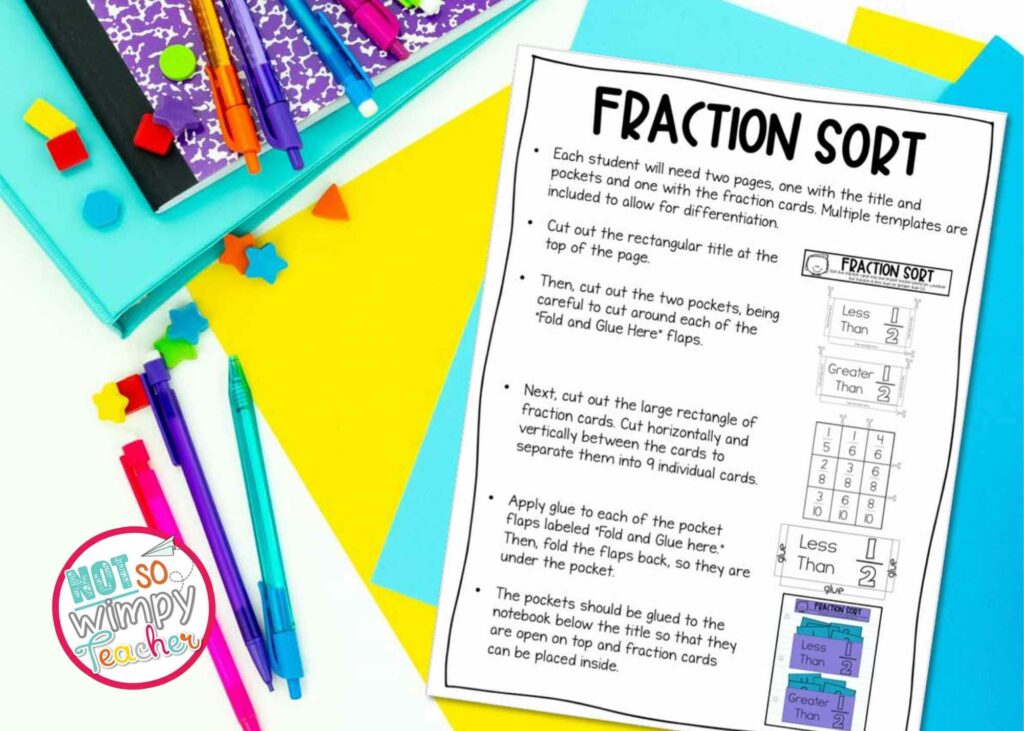
Interactive notebooks help kids understand the material
Interactive notebooks are a combination of traditional notes and hands-on activities. They require students to interact with, manipulate, and think about new skills as they complete each activity. These notebooks are an active learning strategy that requires kids to think deeply about new concepts. This leads to a deeper understanding.
Kids have fun making interactive notebooks
Interactive notebooks make practicing skills a lot more engaging than a boring old worksheet. Students love the opportunity to cut, fold, spin, glue, and move around different pieces of the notebook.
My students used to call them “scrapbooks”. They were highly engaged in the learning process because they were having fun. They also were invested in the assignment because they knew that they were adding pages to a notebook that they would have for the entire year. Each assignment was part of a bigger goal and they wanted to do a good job. Interactive notebooks are a valuable investment of time and energy.
Interactive notebooks make a great resource
As students add activities to their interactive notebooks, they are creating a great reference source for themselves. If they want to refresh their memory on the associative property or on different multiplication strategies, they can flip back through their notebooks and review those pages. My students referred to their notebooks regularly throughout the year and tended to go to their notebooks rather than posters on the wall for information.
Interactive notebooks are also a great study tool for test prep.
They are great for kinesthetic learners
Interactive notebooks are also great for your kinesthetic learners. The practice of physically manipulating the paper to complete the activities solidifies learning for some kids.
And all students, regardless of preferred learning style, benefit from practicing fine motor skills. It’s not possible to get that kind of sensory experience using a laptop or an iPad.
Interactive Notebooks Make Assessment Easy
Speaking of assessment, a quick flip through an interactive notebook is all you need to see if your students understand the material. You can easily assess whether the entire class needs a reteach or whether certain students would benefit from a review of the material. You can use them to make decisions about moving students from one group to another or to decide on intervention and enrichment opportunities.
They make differentiation a breeze
Interactive notebooks make it easy to differentiate. If you have a student who needs a little more support, you can allow them to use their notebook when completing assignments or even taking tests.
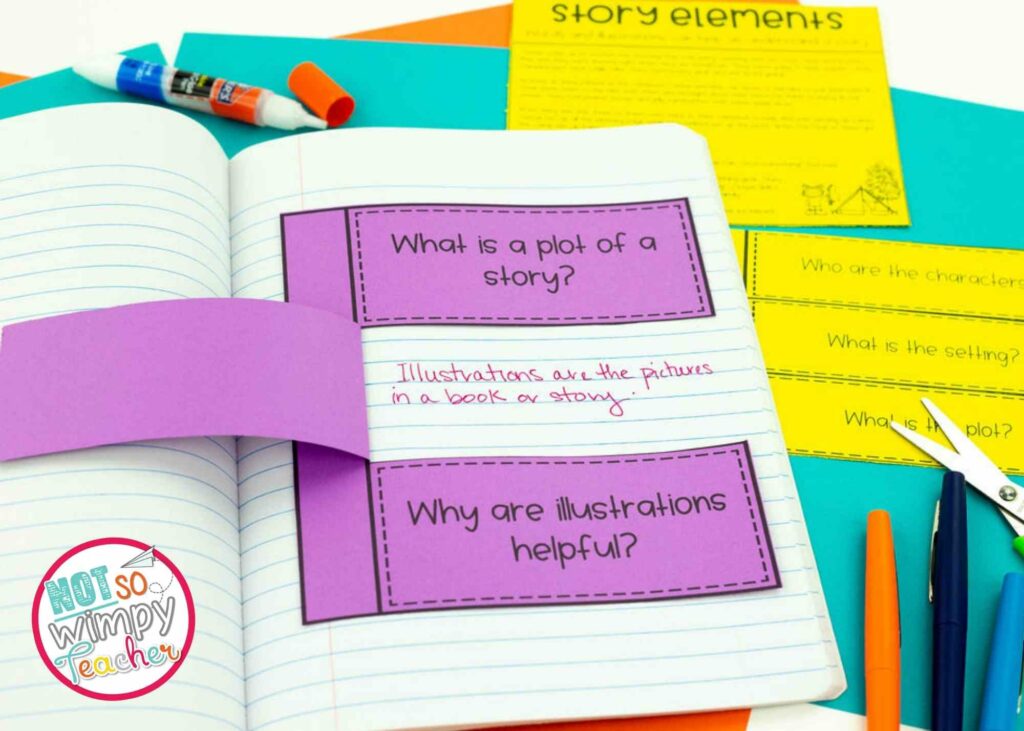
Tips for Making Interactive Notebooks Easy to Use
Start small
When I was in the classroom, I used interactive notebooks in a number of subjects. If you use my resources, you know that they are part of my grammar, math, and reading routines. But if you are new to using interactive notebooks don’t try and introduce them all at once.
Start small. Try using these notebooks in just one subject first. If it goes well, you can always add another subject a few weeks later.
And don’t think you have to do interactive notebooks every day. They are just one learning strategy to add to your toolbox. Once a week per subject is plenty.
Model, model, model
Like everything in the classroom, you will need to spend time teaching your students how to use interactive notebooks. I strongly recommend making a sample book to show your students. If you don’t have time to make the whole notebook, at least do a few activities so you can flip through and show students what the finished book will look like. This will help them picture what they are supposed to be doing and motivate them to do their best work.
Model how to cut, how to keep track of pieces, and how much glue to use. You will need to teach them what you expect for every part of the process.

Teach students how to cut
If you teach a lower grade, you may need to teach the mechanics of cutting. Like showing your students how to hold the scissors and the paper. But even if you teach upper elementary, you should teach them a strategy for cutting. I know it sounds silly, but it saves so much time.
I show my students how to cut around the edges of the paper. Then cut our columns or rows first, and then individual pieces. This goes against kids’ natural tendency to cut out each piece individually and is a huge time saver.
If cutting still takes too long, try racing your students. Give them a head start and then challenge them to beat you, while still cutting “neatly”. They do need to be able to read all of the pieces when they are finished cutting.
You can also use a paper cutter to cut off the edges and to make any straight cuts. Just be sure to keep like pieces together. If you have a parent volunteer, ask them to take care of trimming edges for you. And if you have a child who really struggles, your parent volunteer, or even a quick-cutting student, could help make the cuts for them.
Use envelopes to keep pieces together
I staple an envelope to the back of students’ notebooks. When they cut out their pieces, they write their number on the back of each piece (just in case) and put it directly into the envelope.
Try a glue sponge
Can I be honest? I hate glue sticks. There I said it. I hate them. The caps are always falling off. Some of the brands aren’t very sticky. Kids have no idea how much to use. The glue only works to adhere paper to paper, and that isn’t even a done deal. Kids waste a lot of time looking for a glue stick with enough glue in it or trying to find the cap that scurried across the floor.
I used glue sponges instead. All you need is a food storage container with a lid, a kitchen sponge, and a bottle of white glue. Simply pour the glue over the sponge, cover it, and let sit overnight. When kept tightly covered, four sponges can last you all year.
It’s so much easier than glue sticks.

Use interactive notebooks after you’ve taught a skill
Before you use interactive notebooks, you should teach a whole group lesson to introduce the skill. In math, you should also give students the opportunity to practice on their own.
Interactive notebooks should be a practice activity that you use after you’ve already introduced a skill to your students. This saves time because by the time they get to the interactive notebook activity, they have a general understanding of the skill they are practicing. The notebook activity is a great way to assess their level of understanding.
Try interactive notebooks in small groups
I like to use interactive notebooks in small groups. I trained my students to start cutting immediately when they saw their Interactive Notebooks on the table. This gave them a head start while I helped other centers get going.
When I got to the table, most of the cutting was done. If not, they could finish up while I did a quick review of the lesson. Then they were ready to start working on their notebooks. The great thing about using Interactive notebooks in small groups is that it is easy to assess what students know.
Print on colored paper
This trick makes it easy to organize materials. You could select a different color for each subject. Or different colors for each topic within a subject. For instance, your addition pages could be green, your subtraction blue, and your fractions orange.
Printing on colored paper also takes away the desire to color. These interactive notebooks are learning tools. Not art projects. We all know kids love to color. But these notebooks are not the place for coloring (unless it makes sense for the activity).
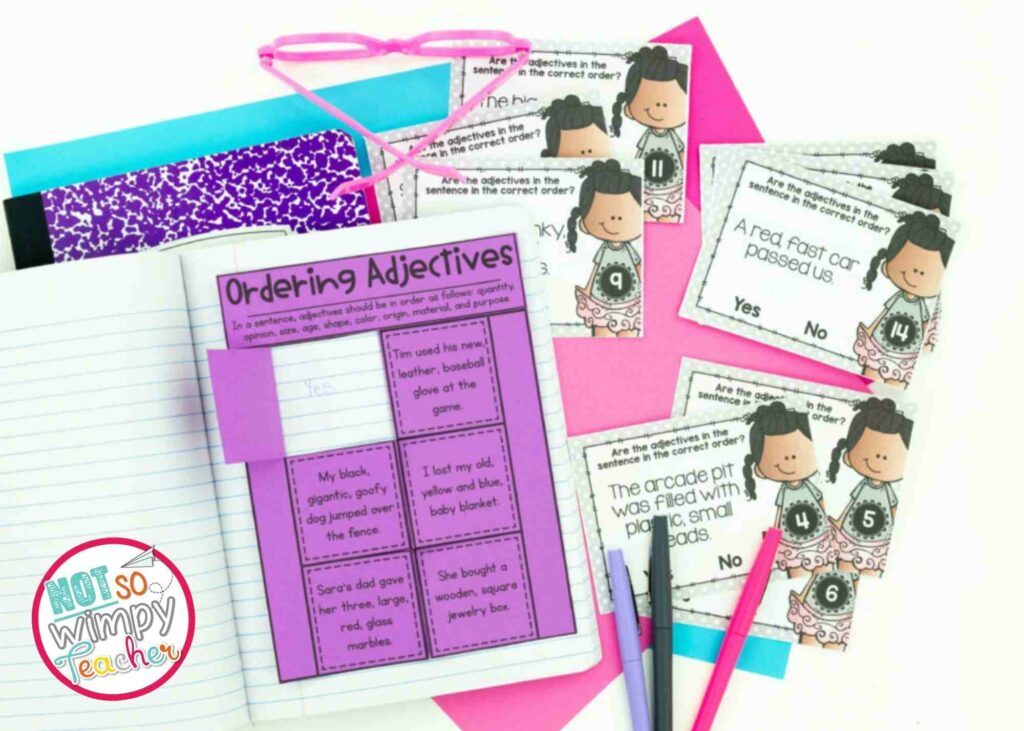
Pick the right activities
Make sure that the activities you choose have easy cuts. You don’t need any intricate pictures.
But even more importantly, make sure that the activities you pick are rigorous, standards-based activities that give kids practice of important skills. Interactive notebooks are not busy work. Nor are they a cutesy assignment.
Yes, kids do enjoy them. But they still need to be purposeful activities that reinforce essential skills.
Ready-to-Use Easy Interactive Notebooks
If I’ve convinced you that interactive notebooks are worth a try, you’ll definitely want to check out my resources. I have stand-alone notebooks for math and my grammar and reading bundles include them. They all feature simple cuts, easy-to-manage activities, and rigorous practice of standards-based skills.
Math notebooks
I have a full year of interactive notebooks for second, third, and fourth grade. And I have a growing bundle for fifth grade. When you buy the growing bundle now, you’ll get immediate access to all of the notebooks currently in the store and you will get access to new interactive notebooks as they are added at no additional cost.
Shop This Post
Grammar notebooks
My grammar bundles come with 32 weeks of lesson plans. Each week includes one interactive notebook activity for students to practice grammar skills. Grammar bundles are available for grades 2-5.
Shop This Post
Reading notebooks
My reading units also include interactive notebooks. Each unit has two different interactive notebook activities to use in small groups or reading centers. Reading units are available for grades 2 and 3.
Shop This Post
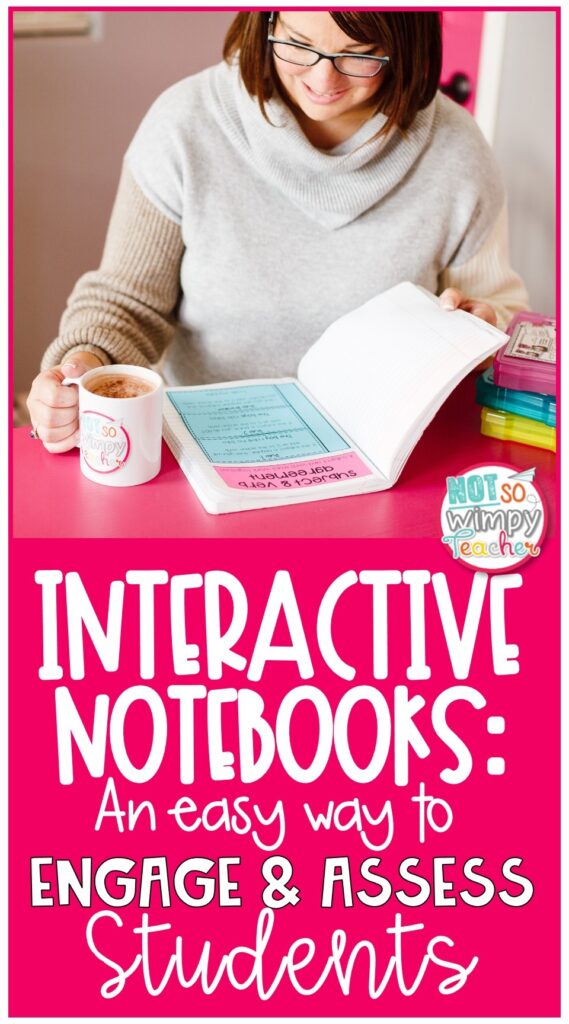
I know your students will love adding interactive notebooks into the routine. And I am pretty confident that you will too. Let me know if you have any questions about how to make interactive notebooks easy.
Have a Not So Wimpy day,


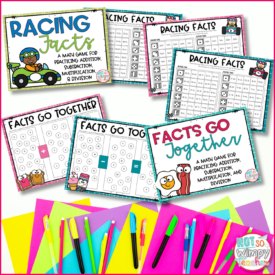
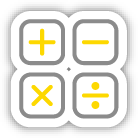
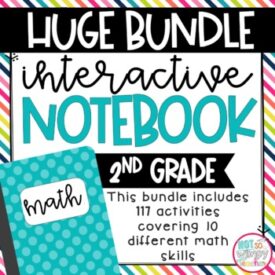
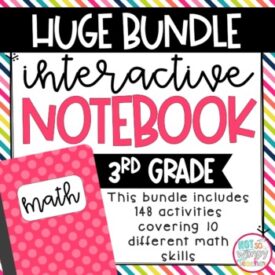
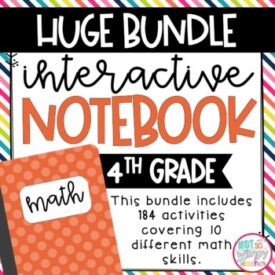
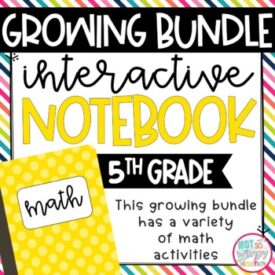
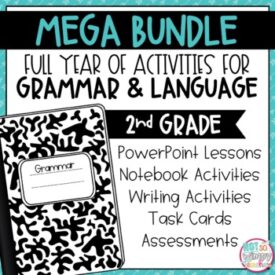
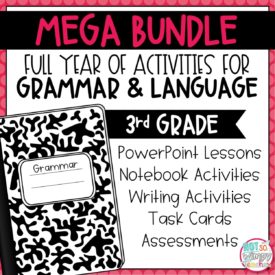
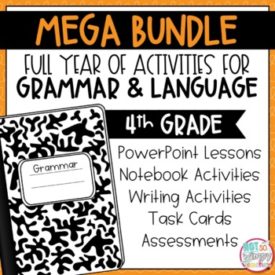
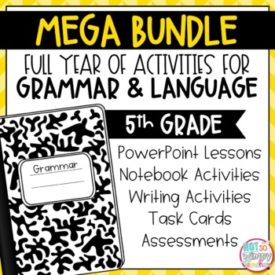
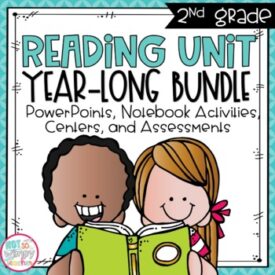
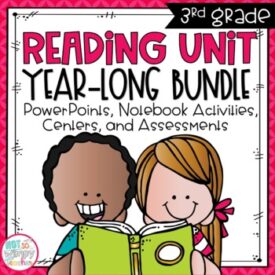



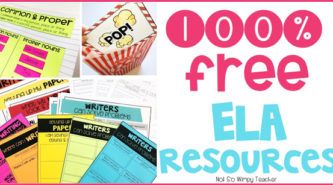











 End of Year Carnival Week for grades 2-5!
End of Year Carnival Week for grades 2-5!
I’d live to see a picture of your glue sponges! Do you have one per student or table or …?
Hi Emily,
I’m sorry, I do not have a picture of my glue sponges. I found they were easily shareable among students and your classroom setup can determine how many you have.